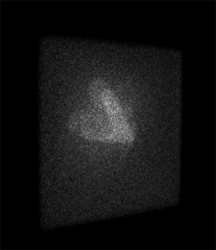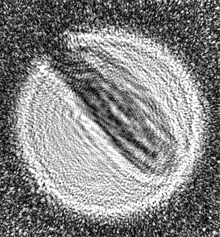Speckle-aided holography:
In a recent project complementing our SLM-imaging activities we have applied speckle patterns (generated by a diffuser plate with a central hole or by a pseudo-random phase pattern on a SLM) for “lensless holographic imaging”, i.e. for holographic phase retrieval of an unknown amplitude or phase object.
In a first approach, a speckle pattern is recorded once in the absence of the sample, and henceforth serves as a known reference. The sample that is afterwards inserted somewhere in the optical beam path changes the speckle pattern. Comparing the modified speckle pattern with the previously recorded one allows quantitative imaging in a lens-free setup.
 |
 Movie (3.5MB) |
Alternatively, one places a known phase object at the periphery of the unknown specimen in the object plane for image recording. The customized phase periphery serves as a constraint for the phase retrieval algorithm, which leads to faster algorithm convergence and improved final accuracy. Quantitative imaging can be performed in a single recording of the resulting diffraction pattern in the camera plane, without using lenses or other optical elements. The method also effectively suppresses the “twin-image”, an artifact that appears when holograms are read out.
 |
 Movie (3.3MB) |
Publication(s):
S. Bernet, W. Harm, A. Jesacher, and M. Ritsch-Marte: Lensless digital holography with diffuse illumination through a pseudo-random phase mask, Optics Express 19, 25113-25124 (2011).
A. Jesacher, W. Harm, S. Bernet, and M. Ritsch-Marte: Quantitative single-shot imaging of complex objects using phase retrieval with a designed periphery, Optics Express 20, 5470-5480 (2012).



